[First time visitor? Coming here directly? Stop and learn about the Beyond Hartford, Beyond Cars series before reading on]
In previous car-free outings, I’ve questioned a few towns’ decisions to allow terrible roadways to exist around train stations, and I am pleased to say that I do not need to write something like that for Greenwich, at least not for the area around its downtown Greenwich Station. Using Steamboat Road, there’s an easy and comfortable walk to the Bruce Museum. LFor food, exit the station on Railroad Avenue and there are options right there, and many more by crossing over to Greenwich Avenue. You do not have to cross a stroad! Everyone cheer!
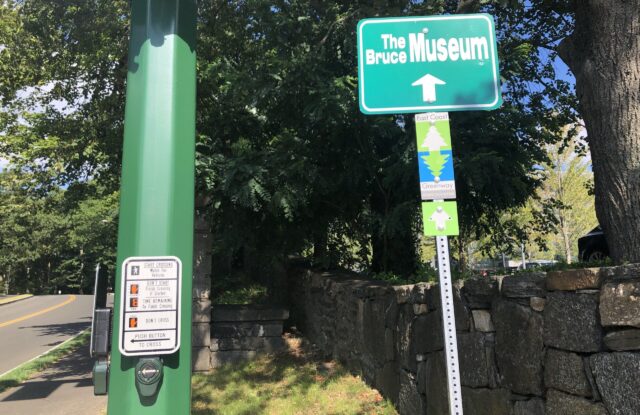
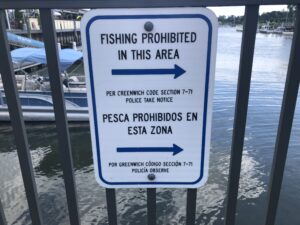
Greenwich had been on my secret maybe-I-will-maybe-I-won’t list because the distance from Hartford by any means of transportation is rough and in all my years of living in Connecticut — which is my whole life — there was never a reason given to me to make the trip.
Until recently.
Flipping through a weekly trade publication I saw a spread about an exhibit on penguins. That’s what got my attention anyway, and then I found myself reading about how The Bruce Museum was having a grand reopening following a major renovation. While vaguely aware of its existence, it struck me as a place that was perhaps dated and pretentious, based on what I had read of others’ visits. Not exactly what would entice me to embark on a journey to almost-New York.
The penguins caught my attention, and then after going to their website, I found another current exhibit that called to me. Mark Dion and Alexis Rockman: Journey to Nature’s Underworld merges art and science, and though the museum has a science wing and an art wing, this was happening within one exhibit.
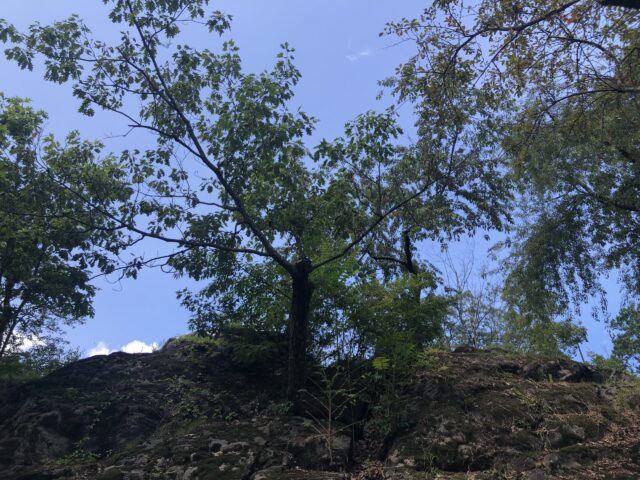
It’s unfair how we’ve been taught that you are either an art (humanities) person or a science (STEM) person, as if there’s no overlap. I resented having to choose, and went in one direction, which while I liked, did not fulfill my curiosity about the natural world. Now, I think people have come to understand practical reasons for embracing the two fields. Simply communicating scientific facts has not conveyed urgency nor inspired people to take action. It just hasn’t. The numbers should speak for themselves, but they don’t, so instead of being angry that the masses aren’t jumping at the data, people need to strategize. Many have. When I hear people talk about what has moved them to action, they don’t say “I was studying a chart and decided. . . .” Instead, they say they were stirred by a scene in A Plastic Ocean or some other type of visual media. Art can unlock the emotion needed to motivate people from a place of awareness to active interest.
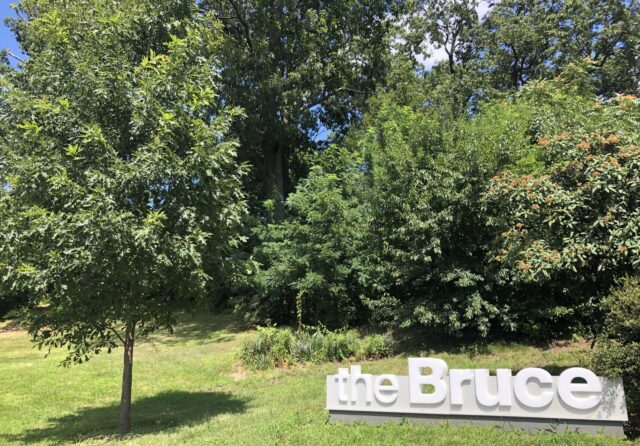
Besides it’s proximity to the train station, The Bruce is easy to access as a pedestrian, as the design does not require people to awkwardly trek across vast parking lots or deal with overly wide driveways. Once you experience this, you have to wonder what so many other cultural organizations are thinking, considering their appeal to families and children on field trips. Why is the norm to do backflips to accommodate school buses, but not those who are on them?
Good landscape design is worth every penny. We all know Greenwich has plenty of spare change. The building and the landscape go together, and if you love rocks and trees, then this will have a special appeal. Others have already written about the design, better than I will, but the architect was absolutely thinking about geology while creating this.
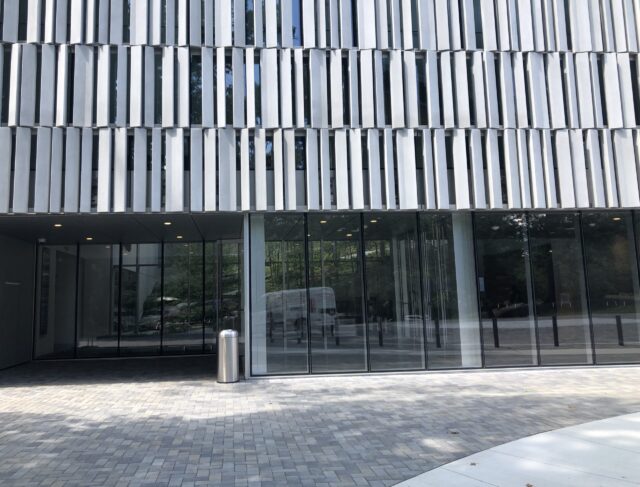
Usually on my little adventures, I am on my own, but this time I had company who was probably not expecting to hear things like “wait! I need pics of the permeable pavers.”
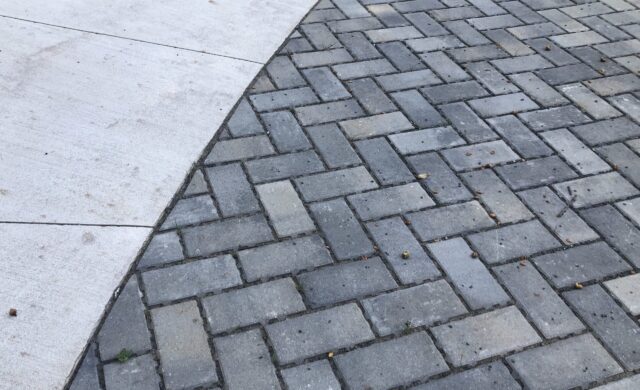
Some people get excited about mystery novels. Others are really into IPAs. I will hold everything and everyone up to stand still and talk about why we need more green infrastructure like this. There are new rain gardens on the property. Inside, they have what are becoming more standard features: water fountains with bottle refill components. Natural light is used in some spaces. If there are other environmentally interesting building features, they should share that with the public because I promise I am not the only nerd who wants to know this stuff.
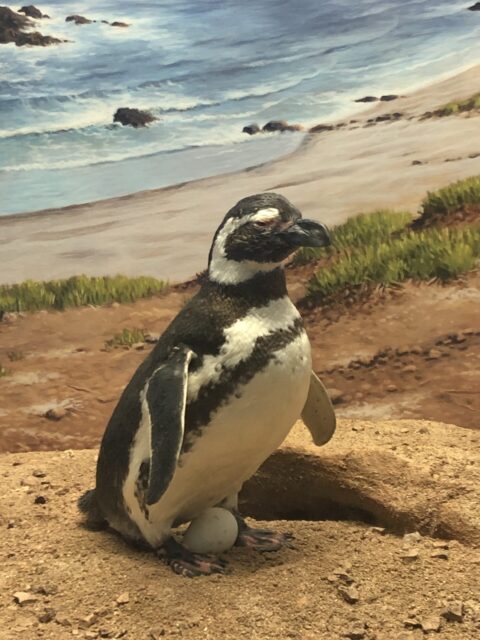
The penguin exhibit closes on August 6, 2023, but those who want to learn how penguins have evolved and adapted over time should make the effort to catch this. This is one of the more honest natural history exhibits I’ve seen. The role humans have played does not get minimized or spoken of in euphemisms. They name names. My favorite wall text in the exhibit is titled “Human Greed, Penguin’s Peril” and describes how humans exploited the birds. The mic drop section of it: “Penguin lovers will relish the fact that Hatch was buried in an unmarked pauper’s grave in 1928 while the penguin colonies he decimated have rebounded to their former glory.”
Did a penguin write that? Maybe.
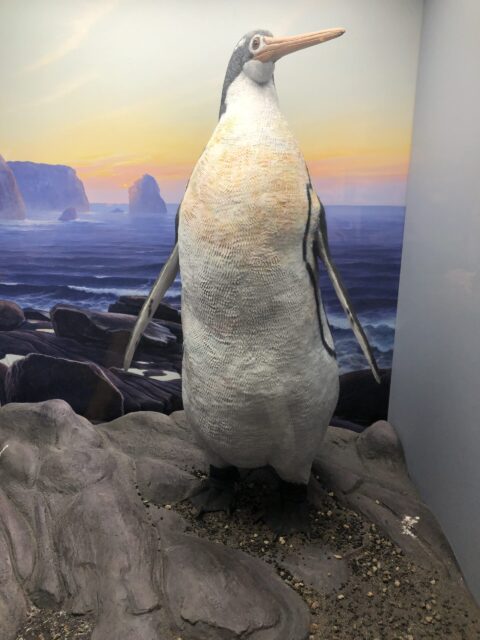
Throughout the museum, wall text is in English and Spanish, fairly consistently. There are hands-on components in some exhibits, with sound in the Terrestrial Ecosystems permanent gallery and lighting that changes to mimic the shift from day to night.
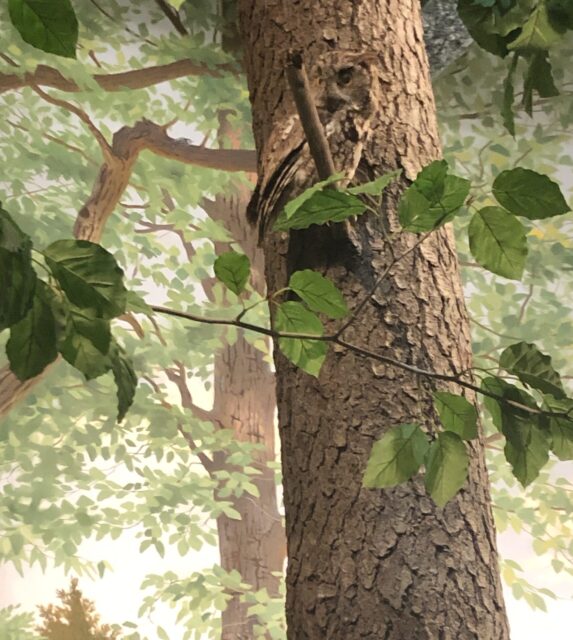
This is part of the “Natural Cycles Shape Our Land” permanent exhibit which really focuses on Connecticut and while we all love the penguins, many of us will be more likely to act responsibly toward the environment when we learn to care more about what is in our own backyard.
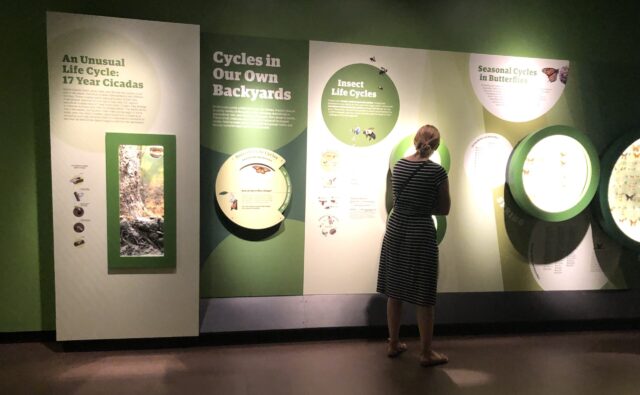
Yes, it is the job of museums to inspire visitors to care. Museums are not neutral. Museums also have a unique social responsibility because they are trusted institutions. Especially in a time when a vocal minority of Americans are attempting to censor information in public schools and libraries, museums have a role to play.
It shouldn’t be controversial to essentially say: these critters in our town are amazing and here is how our behavior has made life hard for them and here is how we can make it more likely they can survive.
Perhaps they do not even say that last part out loud, but the museum presents facts clearly:
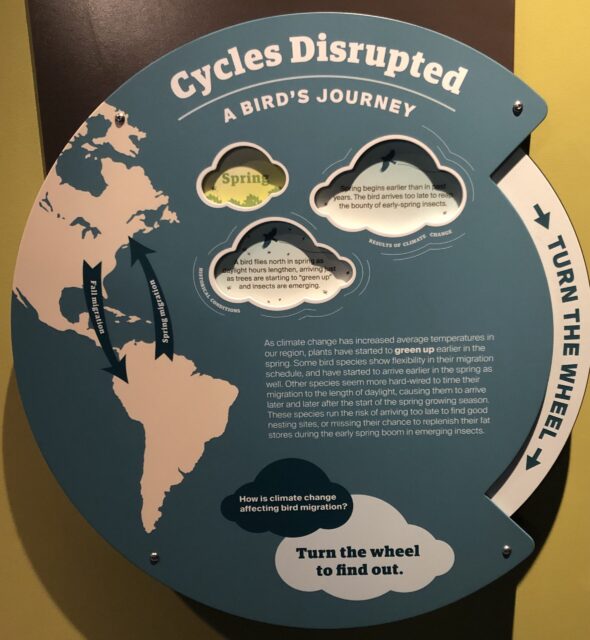
Let’s zoom in:
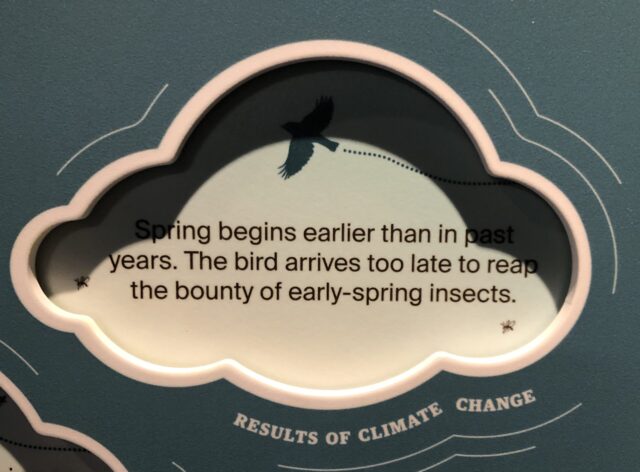
What they get across well is that not all cycles that we observe in nature are natural or healthy.
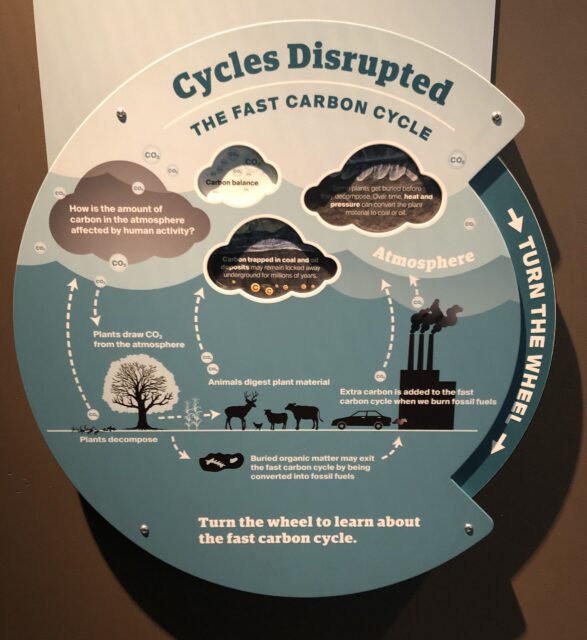
And bonus points for the “Cycles Disrupted” labels. If the museum needs an idea for an adult program, may I suggest an evening of stand up comedy about perimenopause, with comics stationed by each of these wheels? Is it hot in here, is it climate change, or is it just my hormones poppin off?
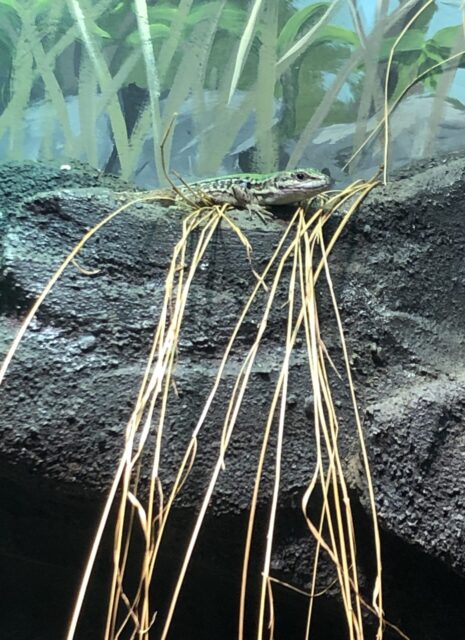
Am I gushing about this? It’s not every day that I encounter something that I will choose over lunch. They do have a cafe, but I was not about to interrupt the fun. What was really satisfying about this museum was how it did not feel like every single piece of text was aimed at young children. Kids were present, running amok and joyfully shrieking about the live reptiles, but the space felt inclusive to all ages, and not like it’s bizarre that adults without children would choose to come here.
I did not spend as much time in some of the art galleries because I was looking for a specific one, but the Kehinde Wiley tapestry did make me pause for a bit. It’s in the “Then is Now: Contemporary Black Art in America” exhibit that will be open through mid-October.
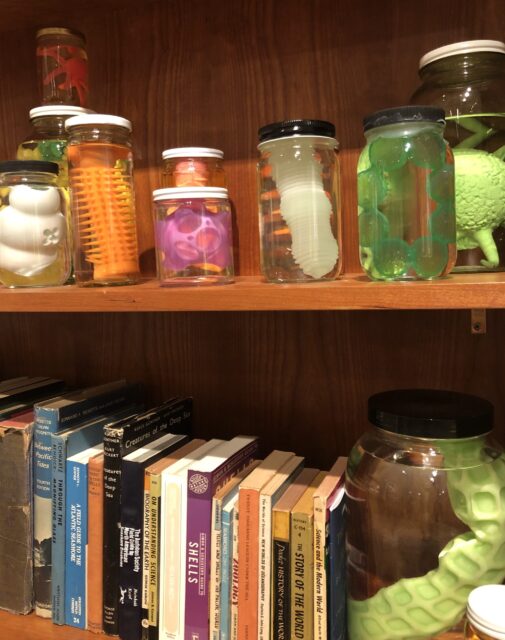
“Journey to Nature’s Underworld” checks all the boxes for me. There is an immersive/interactive work. There are oddities. Curiosities. If I lived in that part of the state, there’s a good chance I would’ve been visiting this exhibit every Tuesday during its run. Me and the guards would get on a first name basis.
Instead, I had one chance to absorb the wonder of this. The museum’s page says this is the “first two-person survey exhibition of these closely allied artists, offering a compelling tour through their celebrated careers and into the shadowy depths of the threatened natural world.” And, the museum also says: “Both artists employ methods of display found in museums of art and natural history, institutions of alleged authority and objectivity, which they slyly subvert in their works. While Dion’s preferred museological modes are taxidermy dioramas and specimen cabinets, Rockman revels in large-scale landscape paintings, densely populated and replete with didactic keys. Like natural history displays and wildlife illustrations, their works are grounded in science and close observation, but presented in a rhetorical, or even theatrical, manner.”
It just works. A few years ago, Mark Dion’s “Cabinet of Marine Debris” (not pictured) was included in an exhibit at the Wadsworth Atheneum where the exhibit was focused on contemporary Connecticut artists. I gravitated to it then, but the piece felt much more at home here, in context of other thematically similar works. The display is crafted from objects Dion harvested from the Great Pacific Garbage Patch. The image above is a small section of his “Institute for Invertebrate Marine Biology.” Yes, some of those plastic and rubber objects are what you think they are.
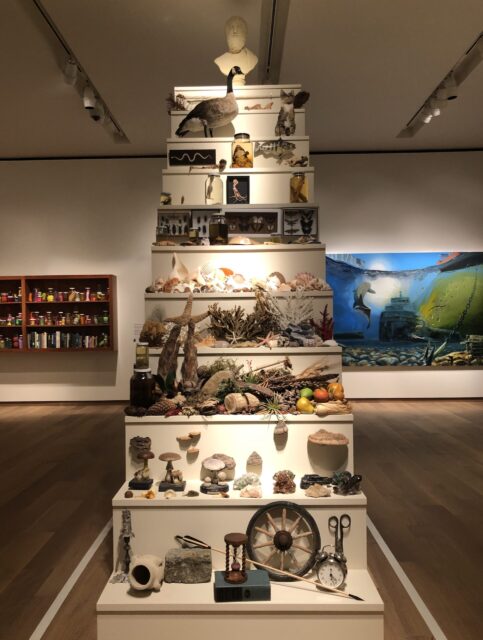
The staircase display above has a door that visitors are invited to open and step inside of, one at a time. Do it.
Another part of this exhibit features the best diorama: taxidermied animals arranged on a golf course with layers of garbage visible below, and a little rat inside of a drain pipe. “American Landscape” is a collaboration between the two artists. The wall text describes it: “Underground, beneath the groomed surface, lies a visible layer of animal-related food, debris, and material culture providing buried clues to our relationships with other earthly creatures. […] As Rockman notes, ‘You can’t make art about ecology in the twentieth or twenty-first century and not include it [trash]. It’s the reality of the state of the planet.'”
I can’t do this exhibit justice, so get down there and see it for yourself, but don’t overlook the permanent exhibits while you’re there.

Something I know was present in the previous version of The Bruce was the mineral collection. My assumption is that everything has been spiffed up. An amethyst display (not pictured) makes for a good selfie background. Most of these gems are not native to this area, but some are.
If you can’t make it in time for the penguins or nature’s underworld exhibits, keep the next one on your radar; “Monsters and Mermaids: Unraveling Natural History’s Greatest Hoaxes” opens at the end of August and runs through early February 2024.
As fantastic as the museum is, you will likely want to do more than just spend several hours in a museum if making the trip from outside of the Connecticut panhandle.
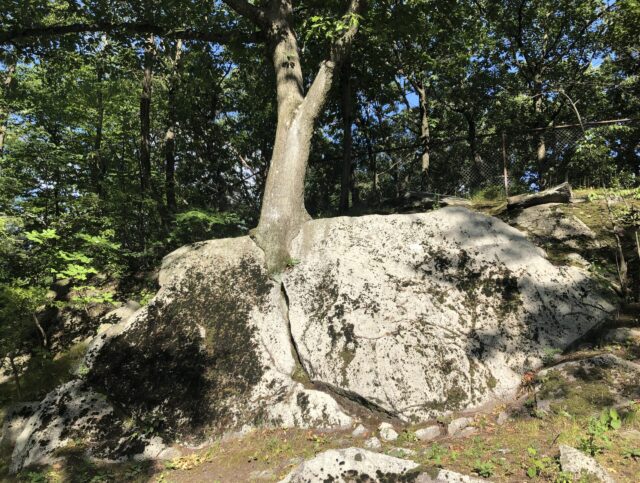
Bruce Park is across the street from the museum. There is an outcropping of Harrison Gneiss to admire. There is a top notch playground. Seriously. It’s a “Boundless Playground” with several play areas and remarkably, lots of shade! Another feature that once you see, will make you question why this is not the standard for all playgrounds. There’s a rain garden. Can’t have too many rain gardens. The ice cream truck parked nearby wasn’t polluting the air with loud music, and its business did not suffer for it.
(The pic below is deceptive because there are no people in it. I waited until they cleared. There were adults and children everywhere behind me.)
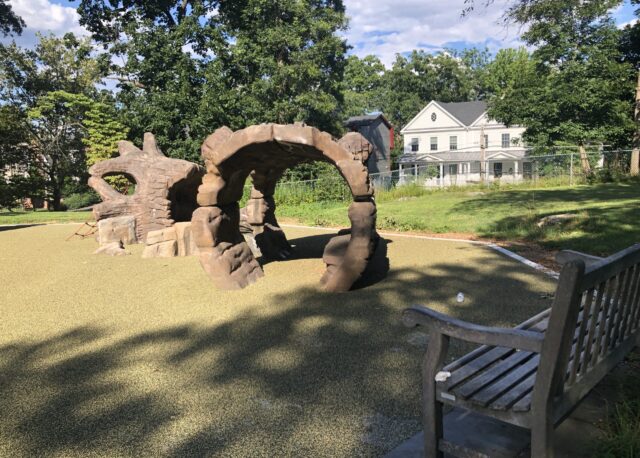
A short walk from there — less than five minutes — is Roger Sherman Baldwin Park. It’s mostly lawn with a few trees, along with picnic tables and benches with a view of Greenwich Harbor.
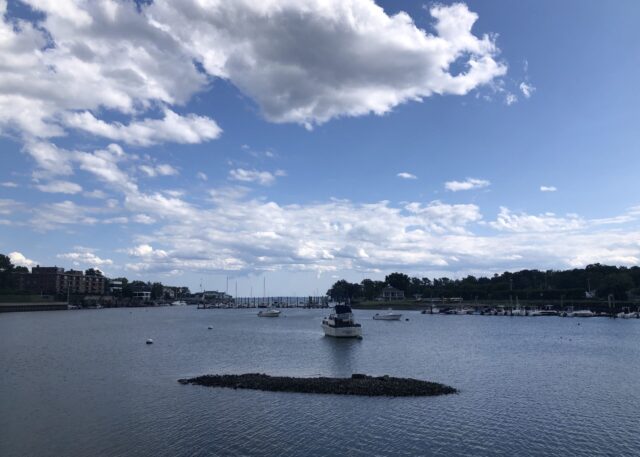
This is adjacent to the ferry docks for Island Beach and Great Captain Island — both places you can visit without needing to be a Greenwich resident. The ferries operate from June through mid-September. Admission tickets are needed for both the ferry and access to island parks, but don’t overthink this; follow the link for non-account holders, then ferry tickets, and then get the combo option for whichever age bracket you are in. There are in-person payment options too.
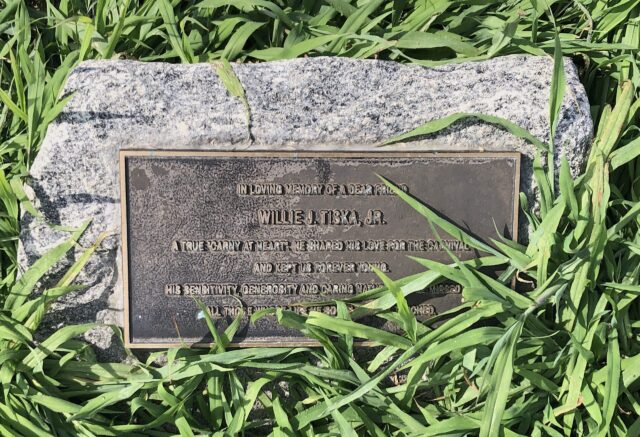
Or, you can stay on dry land and read plaques. I did not notice others, actually, but I felt like I hit the jackpot with this one and didn’t need to keep searching: “A true carny at heart, he shared his love for the carnival and kept us forever young.”
There was no carnival set up in the park while I was there, but a mobile (?) bandstand was present and there are concerts — mostly by cover bands — at this and other Greenwich parks throughout the summer.
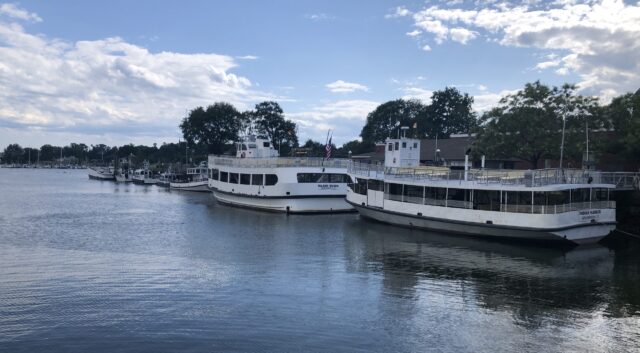
Swimming is generally not a way that I enjoy water, but others do so I should mention that while down there, “swimmer’s itch” was documented at various town beaches. This is on top of the recent Vibrio warning issued for all of Long Island Sound. We already know ticks and later season mosquitoes are an issue statewide.
Save The Sound’s 2023 Beach Report shows how water quality is ranked over the last three years. It’s based on beach water quality data along with rainfall data, so people understand how quality fluctuates under different conditions. In 2022, Island Beach and Great Captain Island Beach — the ones you would take a ferry to access — earned an A+. The latter did equally well in 2021; Island Beach earned a B- that year. Greenwich Point Beach earned a B the last two years; Byram Park Beach moved from a D+ to a C in the last two years but still remains among the lowest scoring beaches in the region. There may be complicated reasons for this, but at a glance, what we can know is that Byram Park Beach is very close to I-95 and a weigh station; there is a large surface parking lot right at the beach.
That does not tell us how those beaches are doing this year, but if I had to choose, I would go for the ferry ride to Great Captain Island Beach, which was among the top ranked in Connecticut.
The permeable pavers outside of The Bruce are awesome, but so much more of this is needed across town — a town that is going to give itself a hernia from the heavy lifting of bullshit excuses to keep out affordable housing. There. I lasted many, many paragraphs before saying it. Look, we need to do better by the environment, but we also need to do better by each other, and I can’t take seriously anyone worried about damage from housing in a town that allows environmental nightmares like golf courses, which overconsume water while leading to runoff issues. Turn all these golf courses — turn even half of them — into ecologically useful spaces, and then perhaps I will believe that those fighting affordable housing actually care about human impact on the environment. Greenwich is a beautiful town, and it’s possible to build a longer table. Glancing at Route 1 alone, Greenwich has opportunities to move away from poor land use (golf course, gas stations, car dealerships, large surface parking lots) and toward better use: modestly-sized multi-family housing developments. You don’t need towers. It’s not New York. But you also don’t need to be jerks about who can live in your community. Expand bus service and start converting to housing wastes of space like church parking lots that are used for a few hours each week but are otherwise vacant. Resource hoarding is Over.
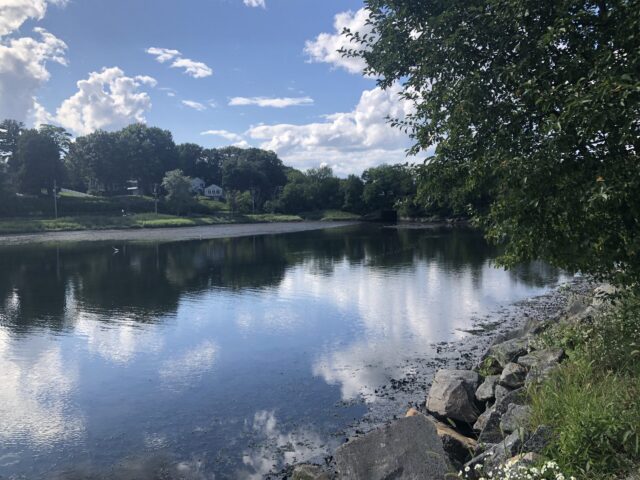
Now that we’re done dredging up the housing issue, we can mention that Greenwich Harbor itself is expected to be dredged. Larger boats, like ferries, are having trouble navigating this during low tide. If it were just the yachts, we would stand around high-fiving the silt for its service.
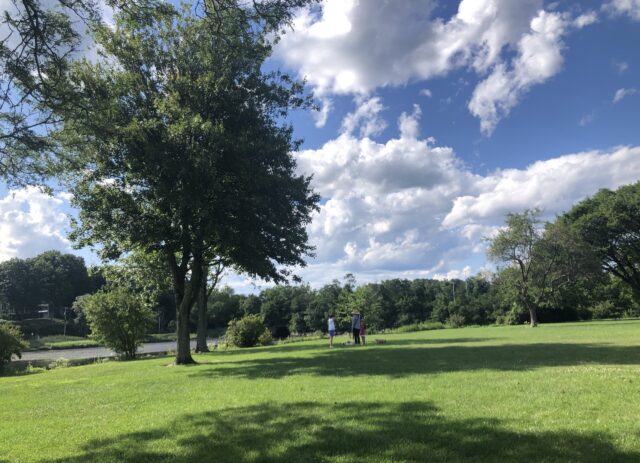
The parks and other outdoor spaces in this area by the Greenwich train station are mostly free of litter. I saw one small scrap of something on this lawn, which considering the use it gets along with proximity to a large parking lot, is impressive. Greenwich Green & Clean does cleanups around town often, and there’s obviously an expectation of what things should look like. Where the sidewalk runs out in the area of Bruce Park, there’s a foot path — the kind I expect to be covered in broken glass. Not so much as a cigarette butt. And yes, people use it, as evidenced by the desire path and encountering a dog walker.
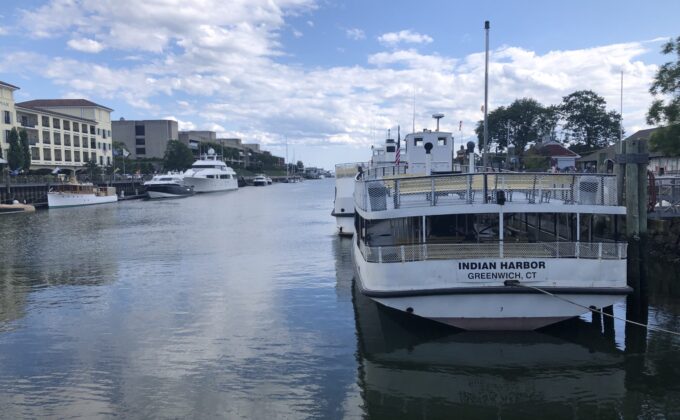
If you get hungry and decide not to sustain yourself on playground ice creams, there are many dining options north of the train station.
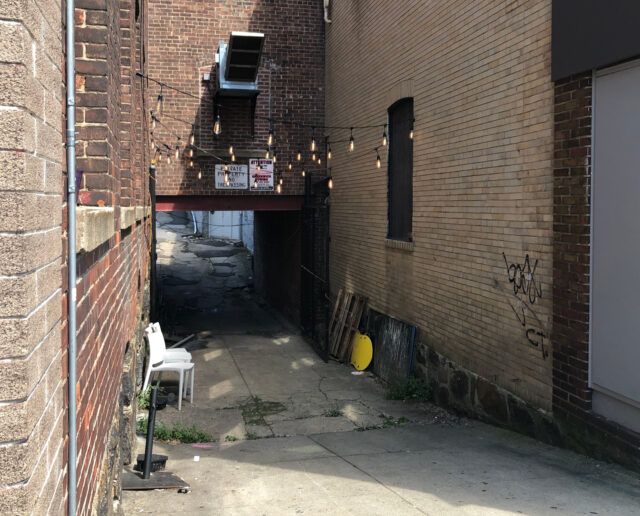
I stopped at Méli-Mélo because (1) crepes, and (2) there are affordable items on the menu. It seemed the place I would least likely be kicked out of for talking too loudly. There are also menu options that are not crepes. Lots of vegetarian choices. I’m a fan. I also realized I have no idea how you’re “supposed to” eat a crepe, but no waiters came over to whisper in my ear any corrections, and the ladies at the next table remained friendly, so I guess my various attempts were, if not correct, non-offensive. They have wheatgrass shots. I did not partake.
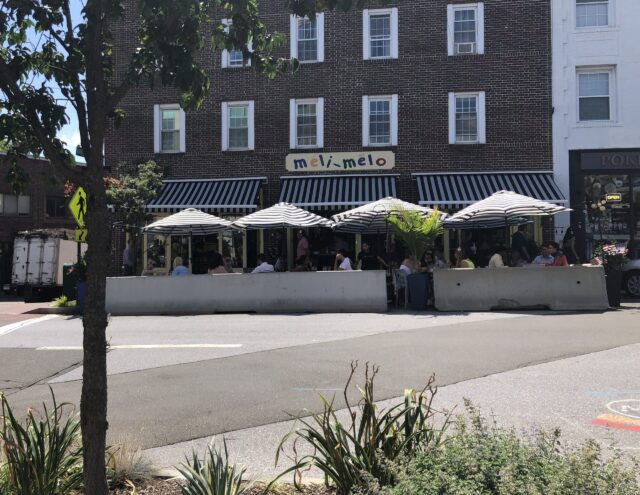
There are fancy clothing stores and whatnot, but I ignored all that and instead let myself be pulled in by Diane’s Books, which had been on my radar before this trip. Immediately inside the front door you can find adult romances. The children’s section is off to one side. There’s a young adult area, with YA rom-coms (or maybe just YA romances? I can’t remember and their no cell phone sign on the front door enticed me to keep mine off and away, so no photo notes). It’s a bookstore with something for all ages and reading levels, plus, authors have signed the walls. It’s small, but despite that and telling myself I was not allowed to leave with any books, I still managed to take one home (Iona Iverson’s Rules for Commuting, if you must know).
Had I been traveling alone, I would have spent more time roaming the downtown streets. When I have the stamina to make this trip again, I will do just that.
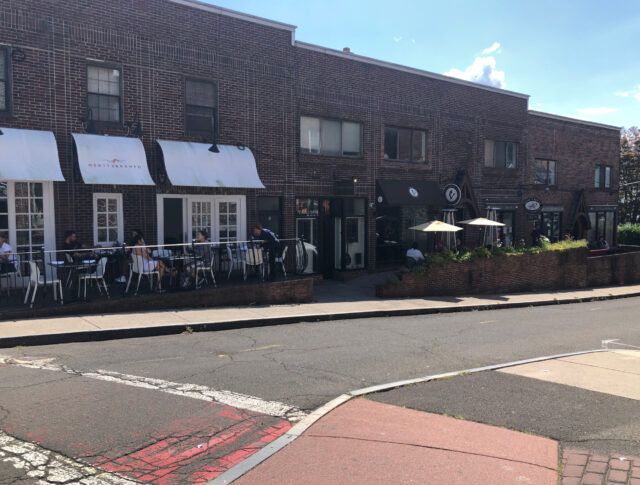
Worth the trip from Hartford? Yes, but build in a pit stop or two along the way.
Greenwich has four train stations — Greenwich, Cos Cob, Riverside, and Old Greenwich. This piece reflects what is an easy walk from the most western one in Connecticut: Greenwich Station. Use the New Haven Line / Metro-North Railroad.
From or near the station, you can access the Greenwich Commuter Shuttle, the CTtransit 311 bus that runs between Stamford and Port Chester, the CTtransit 971 I-Bus Express between Stamford and White Plains, and possibly others.
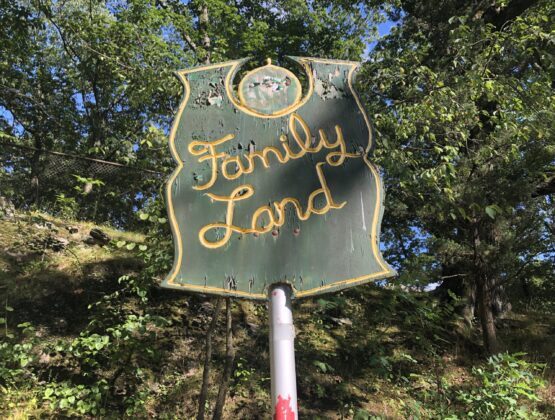
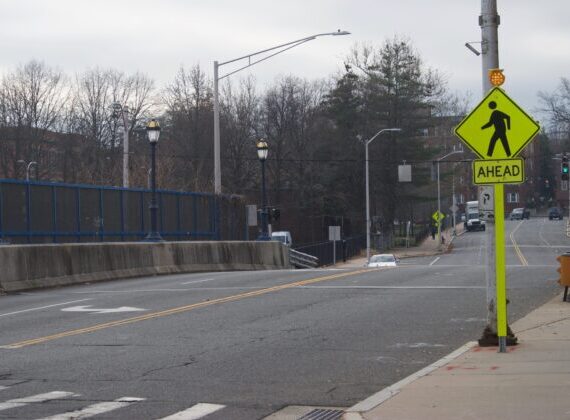

Eric Dobbs
PSA from an experienced New Haven Line rider: taking the train to and from any Greenwich stop will require you to transfer in Stamford. It seems like it shouldn’t, “because it’s all in Connecticut right?”, but Stamford just happens to be the point on the New Haven Line where any trains coming from north of it turn express and go straight to New York.
Conductors are usually pretty good about reminding people of this when they take your ticket, but it’s something to just have in mind from the beginning so you don’t inadvertently end up having an awkward two hour detour or sudden change of plans.
Kerri Ana Provost
Yes, there’s also that.
It’s not quite taking a train from Springfield to Toledo in the middle of the night, but it’s not a trip I would make from Hartford without a very compelling reason.